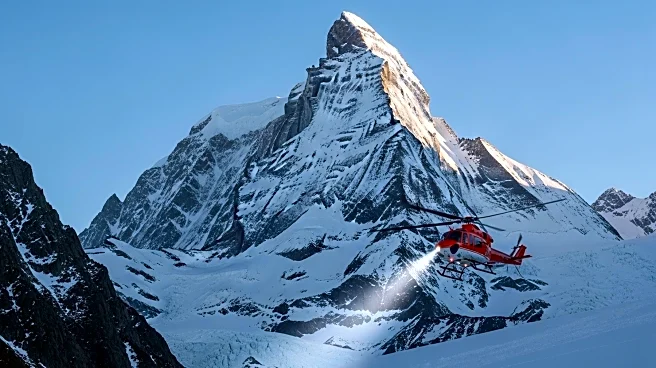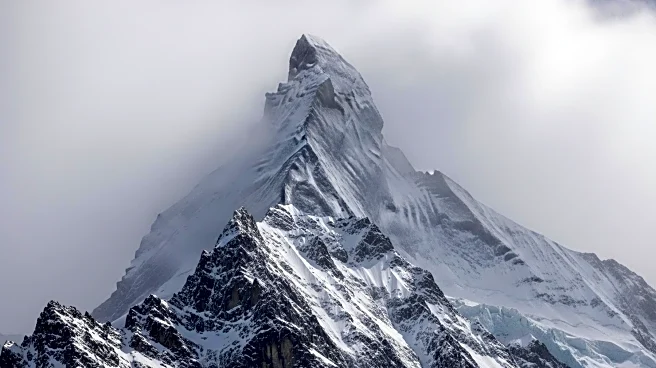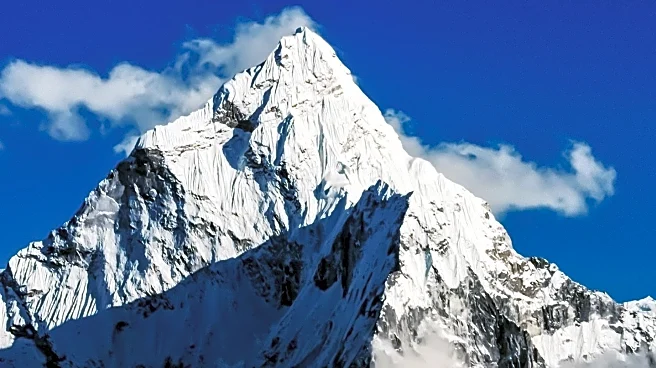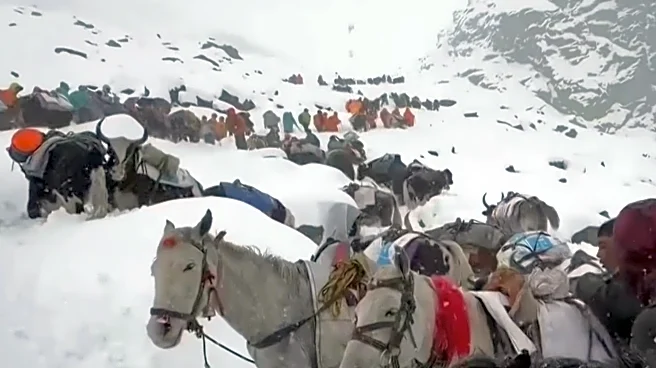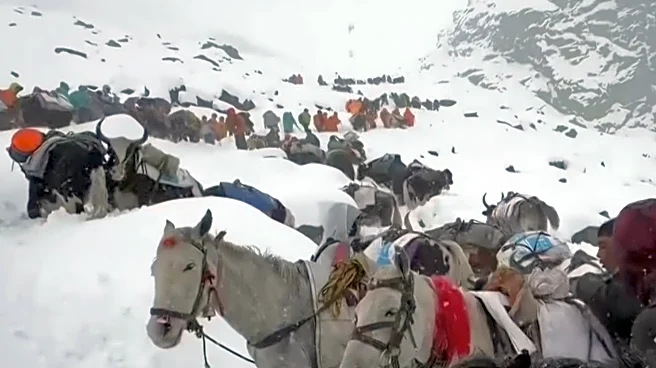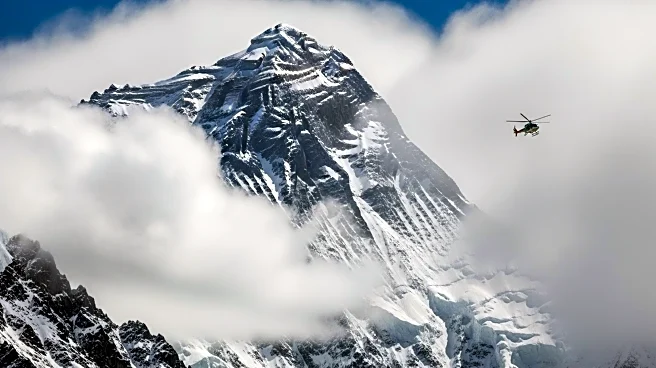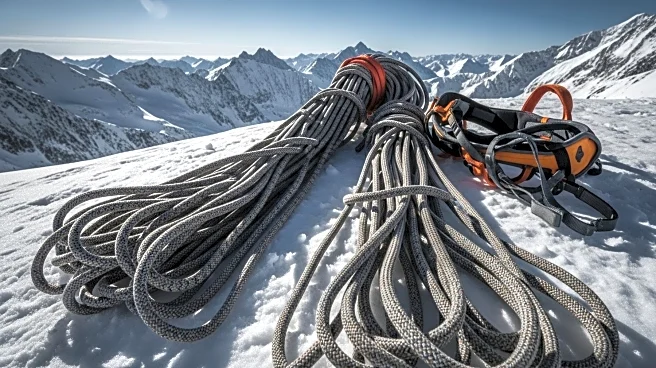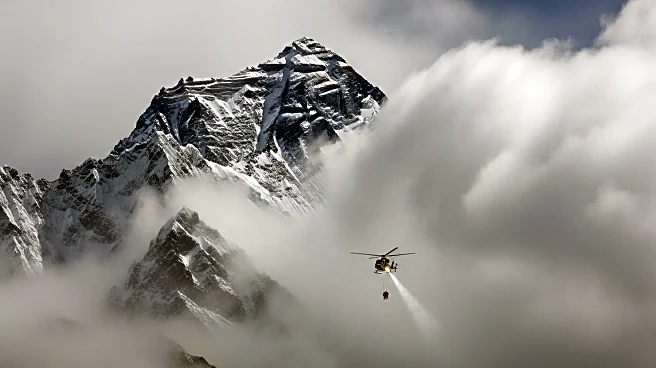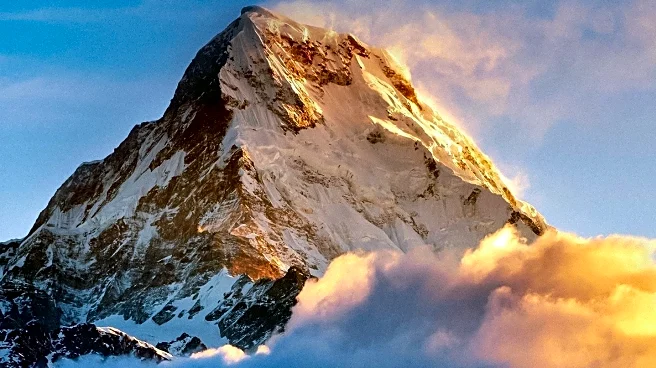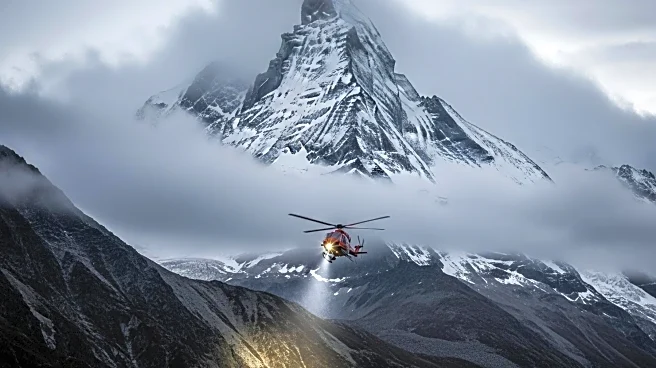What's Happening?
A South Korean climber has died near Mount Everest after being caught in a severe snowstorm, as reported by the Nepal Mountaineering Association. The climber was initially reported missing over the weekend near the summit of Mera Peak, a 21,250-foot mountain in Nepal. This incident coincides with a massive blizzard that has left nearly 1,000 hikers stranded on Mount Everest. The extreme weather began on Friday evening, intensifying over the weekend and catching many mountain guides off guard. Rescue operations are ongoing, with 580 hikers already guided to safety in Tibet. The blizzard occurred during China's Golden Week holiday, a peak time for tourism, further complicating rescue efforts.
Why It's Important?
The death of the climber and the stranding of hundreds highlight the dangers associated with high-altitude climbing, especially during unpredictable weather conditions. This event underscores the need for improved safety measures and emergency preparedness for climbers and guides. The incident also impacts the tourism industry, particularly in Nepal and China, as it coincides with a major holiday period. The situation may lead to increased scrutiny of climbing regulations and the adequacy of rescue operations in the region. Additionally, the severe weather conditions have broader implications for climate change discussions, as such extreme weather events become more frequent.
What's Next?
Rescue operations are expected to continue as authorities work to ensure the safety of all stranded climbers. The incident may prompt a review of current safety protocols and emergency response strategies in the region. There could be calls for stricter regulations on climbing permits and better weather forecasting systems to prevent similar occurrences in the future. The tourism industry may also need to reassess its operations during peak seasons to ensure the safety of tourists and climbers.
Beyond the Headlines
This event may lead to a broader discussion on the impact of climate change on high-altitude regions, as extreme weather events become more common. The incident could also influence the cultural perception of mountaineering, highlighting the balance between adventure and safety. Additionally, the economic impact on local communities reliant on tourism could be significant, prompting discussions on sustainable tourism practices.

